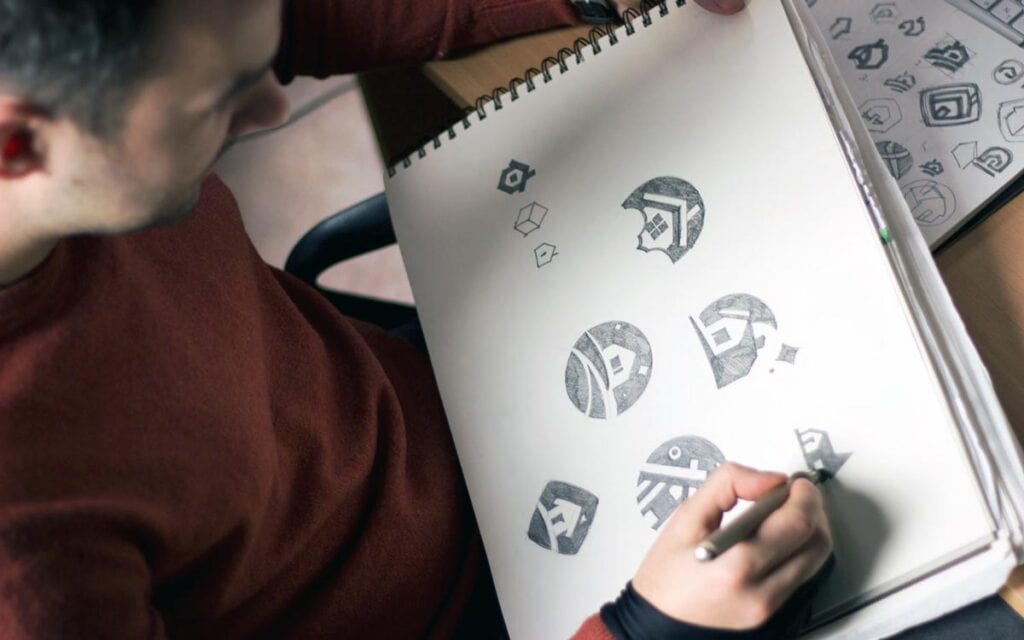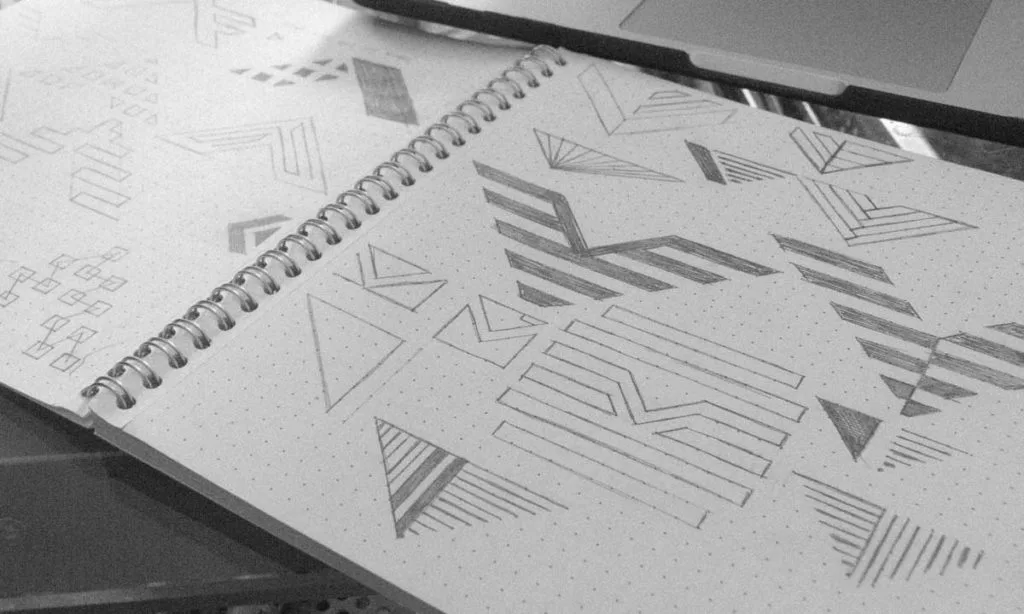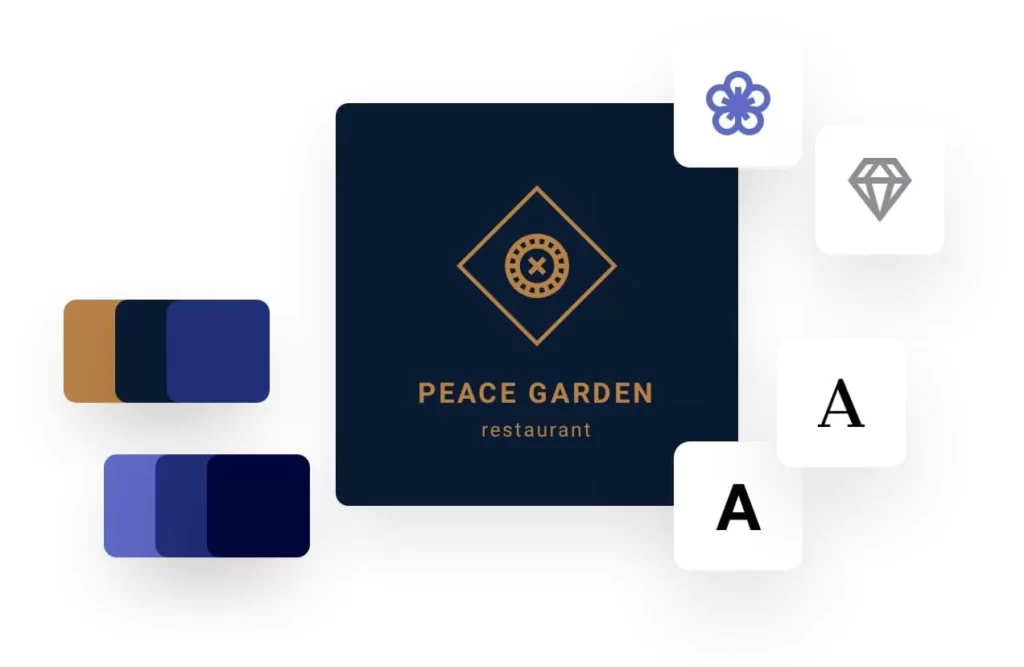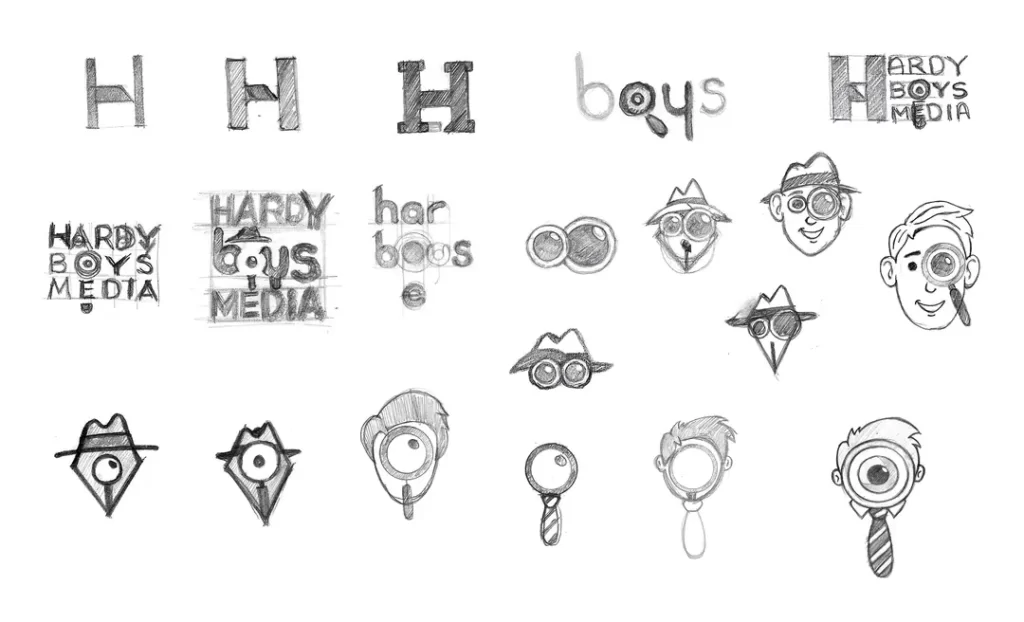The Ultimate Guide to Making Your Own Logo
In today's competitive marketplace, a strong brand identity is vital to distinguish your business and leave a lasting impression on your audience. A compelling logo is the cornerstone of this identity, encapsulating the essence of your brand in a single, eye-catching visual representation. But how can you create a powerful symbol that embodies your brand's personality and values while standing the test of time? Welcome to “The Ultimate Guide to Making Your Own Logo”,—a comprehensive resource designed to help you navigate the intricate world of logo design, ensuring your brand stands out in a sea of competitors.
This guide will break down the logo design process into manageable steps, revealing the secrets behind successful logo creation and providing the tools and knowledge to craft a unique and memorable emblem for your brand. We'll delve into the fundamental principles of design, explore various styles and trends, and offer practical tips and insights to help you avoid common pitfalls. By the end of this journey, you will have the confidence and skillset to design a logo that captures the spirit of your brand and resonates with your target audience.
Join us as we unravel the mysteries of logo design, from understanding the psychology of colour and typography to mastering the art of simplicity and balance. This is your roadmap to creating a logo that will captivate your customers, foster brand loyalty, and drive your business to new heights of success. So, let's embark on this exciting adventure together and make your vision come to life!
Table of Contents
Why Your Logo Matters

Your logo serves as the visual embodiment of your brand identity, encapsulating the essence of your business in a single image. As the initial point of contact between your brand and potential customers, it is a crucial element that appears across various platforms, such as websites, products, and business cards. An impactful logo can convey your brand's core values and personality, leaving an indelible mark on the minds of prospective clients.
To craft a genuinely distinctive logo, ensure that it possesses the following attributes:
- Memorable: An outstanding logo should be instantly recognisable and easy to recall. This will help your brand stay top of mind for potential customers, allowing them to associate your logo with your business effortlessly.
- Simple: Strive for a logo that is straightforward yet elegant in its design. A minimalist approach often proves more effective, as it enables viewers to grasp the essence of your brand without feeling overwhelmed by intricate details.
- Timeless: Aim to create a logo that transcends fleeting design trends, ensuring it remains relevant and appealing for years. A classic design will serve your brand well over time, as it must only be updated occasionally to stay current.
- Versatile: A versatile logo can be adapted to various mediums and sizes without losing its impact or legibility. This is especially important in today's digital age, where your logo will appear on screens, print materials, and other formats.
- Reflective of your brand's personality: Your logo should capture the unique character of your brand, embodying its values, culture, and vision. This will help your target audience connect emotionally with your business and understand its purpose.
Designing a remarkable logo requires significant time, energy, and creativity. Nevertheless, even those with limited design experience can develop a logo that elevates their brand to new heights by harnessing the right tools and techniques. Considering the above attributes, you'll be well-equipped to create a logo that genuinely distinguishes your business in a competitive marketplace.
Understanding Your Brand Identity

Before embarking on the logo design journey, it is vital to have a thorough understanding of your brand identity. Your logo should visually represent your brand's values, personality, and essence. To ensure that your logo aligns with your brand and resonates with your target audience, consider the following steps before diving into the design process:
- Define your brand's mission: Begin by clarifying your brand's purpose and overarching objectives. What do you hope to accomplish, and what sets your brand apart from competitors? A clear mission will guide your logo design decisions, ensuring that your logo effectively conveys your brand's intent.
- Establish your brand values: Reflect on the core principles that guide your brand's actions and decision-making processes. These values should be apparent in every aspect of your brand, including your logo. Incorporating your brand values into your logo design will create a stronger connection with your audience, who will recognise and appreciate these values.
- Identify your target audience: Gain a deep understanding of your ideal customers, including their demographics, preferences, and needs. This information will help you create a logo that speaks directly to your target market, making them more likely to engage with your brand.
- Determine your brand personality: Assess the unique characteristics that define your brand, such as its tone, style, and attitude. Your brand personality should be reflected in your logo, as it helps potential customers quickly form an emotional connection with your business. For instance, if your brand is playful and casual, your logo should evoke those feelings.
- Research competitors and industry trends: Analyse the logos and branding of other businesses in your industry to identify common themes, styles, and trends. This research will help you differentiate your brand from the competition and ensure that your logo is both relevant and distinctive within your market.
By taking the time to carefully consider your brand's mission, values, target audience, personality, and industry landscape, you will be better equipped to create a logo that resonates with your audience and effectively communicates your brand's essence. This thoughtful approach will create a more impactful logo that strengthens your brand identity and fosters lasting connections with your customers.
Choosing Your Design Elements
Once you've defined your brand identity, it's time to choose your design elements. These include:
- Colours
- Typography
- Icons or graphics
Your colour palette should be consistent with your brand's personality and values. Colour psychology can also play a role in the way people perceive your brand. For example, blue is often associated with trust and professionalism, while red is associated with passion and energy.
Typography is also an important design element to consider. Choose a font that's easy to read and reflects your brand's personality. Script fonts can be elegant and feminine, while sans-serif fonts are modern and clean.
Icons or graphics can add visual interest to your logo and help communicate your brand's message. However, it's vital to choose icons or graphics that are simple and timeless. Overly complicated designs can be distracting and may not stand the test of time.
Sketching Your Ideas

When you clearly understand the design elements you want to incorporate, it's time to initiate the creative process by sketching your ideas. Sketching is a crucial step in logo design, as it enables you to experiment with various concepts, evaluate potential options, and fine-tune your ideas before finalising your design.
- Begin with rough sketches: Start by drawing out a range of initial ideas for your logo. Don't worry about achieving perfection or focusing on intricate details at this stage. Instead, concentrate on the broader composition and overall concept of your logo. This will allow you to explore multiple directions and generate diverse ideas.
- Experiment with different styles and elements: During the sketching process, feel free to play around with different shapes, fonts, and visual parts. This exploration will help you identify the most practical combination of design elements to create a unique and impactful logo that accurately represents your brand.
- Refine your ideas: As you continue sketching, you will likely notice that certain concepts or elements are particularly practical or appealing. Focus on refining these ideas by iterating on your sketches, making adjustments, and incorporating feedback from others. This continuous improvement will help you hone your design and bring your logo closer to its final form.
- Narrow down your options: After generating a diverse collection of sketches, narrow down your choices. As discussed earlier, identify the designs that best align with your brand identity, resonate with your target audience, and meet the criteria for a great logo. This process of elimination will help you arrive at a more manageable set of design options to develop further.
- Develop more detailed sketches: Once you have a smaller selection of designs, create more polished and detailed drawings. Focus on refining the composition, typography, colour scheme, and other design elements. This stage will help you visualise your logo in greater detail and make any necessary adjustments before moving on to the digital design phase.
By dedicating ample time and effort to the sketching phase, you can experiment with various ideas and concepts, ultimately creating a logo design that truly encapsulates your brand's identity. This process facilitates creativity and helps you refine your ideas before committing to a final plan, increasing the likelihood that your logo will make a powerful and lasting impression.
Refining Your Design
Once you have some rough sketches, it's time to refine your design. Choose the best ideas from your sketches and start adding more details. This is the time to start thinking about the finer details of your logo, such as line weight, spacing, and alignment.
It's essential to keep your design simple and avoid clutter. A cluttered logo can be overwhelming and challenging to read. Please stick to one or two design elements and focus on making them stand out.
Choosing Your Final Design
Once you have a refined design, it's time to choose your final logo. Consider how your logo will look in different formats, such as on a website, a business card, or a billboard. Your logo should be versatile enough to work in various sizes and configurations.
Get feedback from others on your final design. Ask for input from colleagues, friends, and family members. This can help you identify any issues with your design that you may need to look into.
Implementing Your Logo

Congratulations on successfully designing your logo! Now, it's time to integrate it into your branding strategy and ensure it becomes an integral part of your brand's visual identity. To make the most of your logo and create a consistent brand image, follow these steps:
- Display your logo prominently: Feature your logo across various touchpoints, including your website, social media profiles, business cards, and other marketing materials. This consistent presence will help establish brand recognition and ensure your target audience associates your logo with your business.
- Maintain consistency with your brand's messaging and personality: Your logo should seamlessly blend with your brand's overall tone and messaging. Ensure that your logo's design, colours, and typography align with your brand's personality, so your audience can quickly connect emotionally with your business.
- Develop your brand's visual identity: Use your logo as a foundation for building your brand's visual identity. This includes selecting complementary colours, fonts, and graphics that work harmoniously with your logo. A cohesive visual identity will strengthen your brand's image and make it more memorable to your target audience.
- Create brand guidelines: Develop a set of brand guidelines that outline the appropriate usage of your logo, as well as your chosen colours, fonts, and imagery. These guidelines will help ensure your branding remains consistent across all channels and platforms, creating a unified brand experience for your customers.
- Understand your target audience: A successful branding strategy requires a deep understanding of your target audience. Take the time to research their needs, preferences, and expectations so you can develop a messaging strategy that resonates with them and effectively communicates your brand's value proposition.
- Continuously evaluate and evolve your branding strategy: Remember that your logo and branding are not static. Regularly assess their effectiveness and adapt to stay relevant to your audience and maintain a competitive edge in your industry.
Remember, your logo is just one component of a comprehensive branding strategy. By integrating your logo into a well-rounded approach that includes a clear understanding of your target audience, consistent messaging, and a cohesive visual identity, you'll be well on your way to building a successful and enduring brand.
Tips and Tricks for Making Your Own Logo

To create a memorable and effective logo, consider the following tips and tricks:
- Keep it simple: A simple logo is easier to recognise and remember. Avoid clutter and overly complicated designs.
- Choose colours carefully: Colour can have a significant impact on the way people perceive your brand. Choose colours that reflect your brand's personality and values.
- Use typography wisely: Typography can convey a lot about your brand's personality. Choose a font that's easy to read and reflective of your brand's tone.
- Think about scalability: Your logo should be versatile enough to work in different sizes and formats, from business cards to billboards.
- Get feedback: Be bold and ask for feedback on your logo design. It can be helpful to get an outside perspective and identify areas for improvement.
Tools for Designing Your Logo
You don't need to be a graphic designer to create a great logo. Some online tools and resources can help you design a professional-looking logo in minutes. Here are some of the most popular tools for making your own logo:
- Canva: Canva is a popular online design tool that offers a range of templates and design elements to help you create a custom logo.
- Adobe Illustrator: Adobe Illustrator is a professional-grade design tool that allows you to create vector-based graphics, including logos.
- Logojoy: Logojoy is an AI-powered logo design tool that uses machine learning to create custom logos based on your design preferences.
- Hatchful: Hatchful is a free logo design tool developed by Shopify that allows you to create a custom logo in minutes.
Conclusion
Making your own logo can be a fun and rewarding experience, but it's essential to approach the process with care and attention to detail. Your logo is the face of your brand, and it should accurately reflect your brand's personality and values.
By following the tips and tricks outlined in this guide and using the right tools and resources, you can create a logo that will make your brand stand out and resonate with your target audience. So, start today and create a logo you'll proudly display for years.
